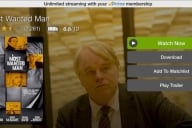You have /5 articles left.
Sign up for a free account or log in.
There is significant grist for the campus technology policy mill in the news that UT-Austin is reviewing plans to charge student “uber-users” supplemental fees for very high levels of bandwidth consumption. The student fees vary depending on weekly bandwidth activity: the base level, 10 Gb (gigabytes) weekly, is included in the room rate for on-campus students. The supplemental fees begin at $27/annually for students who consumer more than 10 Gb but less than 50 Gb weekly, and rise to $60 annually (academic year) for students who use as much as 500 Gb weekly. (For contextual purposes, the DVD file for many two-hour long commercial movies can be about 4-5 gigabytes.)
The first issue, as noted in Carl Straumsheim’s August 4 report published by Inside Higher Ed, involves net neutrality: even as virtually all organizations that lobby on behalf of academe in Washington have come out in a single (and very loud) voice supporting the concept of net neutrality, the proposed policy at UT-Austin would create a very similar fast lane/slow lane structure that many academic experts rail against in their arguments in support of net neutrality.
[SIDEBAR: A recent three-part series in Wired offers interesting information on and significant insight into the truly complex issue of net neutrality. Part 1 (“What Everyone Get’s Wrong in the Debate Over Net Neutrality”) argues that the much-feared fast lanes are already here and may have helped to save the Internet from chaos. Part 2 profiles Tim Wu, the Columbia University law school professor who is often cited as the “father of net neutrality.” And Part 3 (“The Case for Net Neutrality’s Nuclear Option”) describes the two-class structure of the FCC’s Internet regulation, involving common carriers and Internet service providers (ISPs), and the consequences these categories have for the future of the Internet. Taken together, these three article provide an ample dollop of cognitive dissonance for individuals on all sides of the net neutrality issue.]
Bandwidth Management Discussed
Inside Higher Ed's weekly news podcast, This Week, will explore this issue, and other issues, on Friday. Lev Gonick, former CIO at Case Western Reserve University, will share his expertise. Sign up here to receive email notification about the publication of This Week.
The second issue for uber-users at UT-Austin is really about Internet entitlements. Historically most institutions have worked on an “all you can eat” model of Internet service. Students (often, not always) paid an IT fee that included generally unrestricted Internet access; faculty and administrators at many institutions pay a monthly connection fee, also typically without restrictions on bandwidth consumption.
It should come as no surprise that the demand for bandwidth – both wired and wireless – has exploded in recent years. Students, faculty, administrators, and staff have multiple devices – desktop computers, laptops, tablets, and smartphones – which they have, understandably, felt entitled to connect to campus networks. Moreover, video – including instructional content from the Khan Academy, the podcasts and vodcasts of course lectures, the video archives of campus presentations by distinguished speakers, and the media projects prepared by students – has become an increasingly ubiquitous part of the academic experience. A growing number of campuses now stream their athletic events over the Internet, intended for both on-campus and off-campus/alumni audiences. And then there is the explosive growth of streaming video content in the consumer market, perhaps best symbolized by Netflix, which at times accounts for up to a third of all after-business hours Internet traffic.
Colleges and universities have long known that a large proportion of the student activity on the campus network is not connected to academic work. This emerged publically decade ago during Congressional hearings when Members, supported (indeed urged on) by the Recording Industry Association of America (RIAA), charged college and university officials with being indifferent, at best, to the illegal P2P piracy of digital music over the campus networks.
But good, bad, or otherwise, most campuses have maintained an “all you can consume” policy on bandwidth, and most campus users feel entitled to bandwidth for all their devices.
Yet some change may be inevitable. You may recall that at one time your plane ticket included a meal and checked baggage; today however, food and luggage are, for most travelers, unbundled services and involve additional fees. Internet providers – be they the CIO on your campus who is responsible for wired and wireless services or the CEO of the commercial service that provides broadband to your residence – are all looking for new sources of revenue. As we all consume more broadband, consumption fees, common in some other countries, may well become part of landscape both on campus and in the consumer market.
Whatever the resolution of uber-user fees UT-Austin – as of late last week the policy was “on-hold” pending additional review – the public discussion at UT-Austin will serve to fuel more campus conversations about bandwidth entitlement and how colleges and universities should address the explosive demands and accompanying rising costs of providing more and better/higher speed bandwidth to students, faculty, administrators, and staff.
Follow me on Twitter: @digitaltweed






